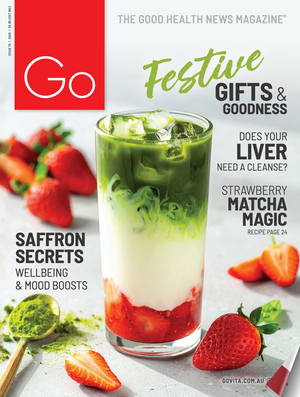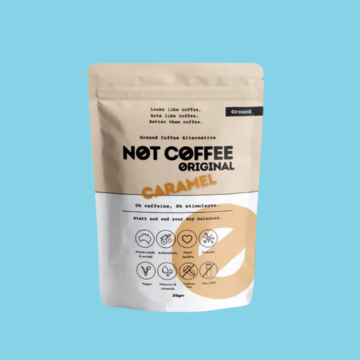Written By Ora Health
blog
The Key Benefits of Turmeric You’re Probably Missing Out On

Turmeric vs Curcumin and Why the Distinction Matters
Curcumin is Poorly Bioavailable in Humans
Turmacin ™ Offers Benefits Beyond Just Curcumin
Liver Toxicity with High Dose Curcumin Supplements: A Valid Concern?
Using Piperine to Increase Bioavailability May Increase Risk of Liver Toxicity
Taking Curcumin Safely
Curcumin BioComplex: A More Effective Approach to Joint Pain Relief
The Key Benefits of Turmeric You’re Probably Missing Out On
We all know about the benefits of turmeric. Curcuma longa has been widely used in Ayurveda, Siddha and even Traditional Chinese Medicine for thousands of years and different fractions of turmeric have been extensively studied in modern clinical research and applied in clinical practice for decades in the treatment of inflammatory conditions such as osteoarthritis.
In recent years, much of the research interest has been focused on determining what makes turmeric ‘work’, specifically the active constituents which drive its therapeutic benefits. Which leads us to a key question – what’s the difference between turmeric and curcumin?
Turmeric and curcumin are often referred to interchangeably, but even though curcumin is derived from the turmeric rhizome, the two are significantly different, especially when it comes to their uses, benefits and bioavailability.
As we now know, curcumin is notoriously poorly bioavailable and is therefore generally sold combined with phospholipids or isolated compounds like piperine to enhance bioavailability.
However, in recent years, high dose curcumin and curcumin-piperine products have been under review by regulators around the world (including our TGA) for concerns related to liver toxicity.
Below, we’ll discuss what current research is saying about turmeric and curcumin, and specifically address the safety of each of them.
Turmeric vs Curcumin and Why the Distinction Matters
If you’ve ever seen turmeric or Curcuma longa in your local farmer’s market, you’d know it looks like very much like ginger, but with a bright orange colour. This rhizome contains a group of bioactive plant substance called curcuminoids, of which there are three types – demethoxycurcumin, bisdemethoxycurcumin and of course curcumin, which is well known for its anti-inflammatory, anti-carcinogenic and antioxidant properties.
Although curcumin makes up the bulk of curcuminoids found in the turmeric rhizome, curcuminoids themselves actually constitute just 2-6% of the turmeric rhizome, so if you’ve been taking a curcumin supplement, you’re actually missing out on 94-98% of the other bioactive compounds in turmeric!
Now you might ask – if curcumin is the potent active ingredient in turmeric, why would I need the other parts of the turmeric rhizome? Let’s dig into that.
Curcumin is Poorly Bioavailable in Humans
Curcumin may tout an array of potential benefits, but studies have shown that its bioavailability in humans is very low, primarily due to its fat-solubility. Unless you’re taking it oil or ghee as traditionally done in Ayurveda, your body will likely struggle to absorb enough of it.
To put things into context, to get enough curcumin into your system to reach levels that would produce a beneficial effect, you would need to consume around 3-5 teaspoons of turmeric powder a day. If you’re not used to eating more than a couple of curry dishes every day, this would be a lot of turmeric!
Because of this, researchers have started looking at that remaining 94-98% of turmeric to see what benefits it could provide beyond curcumin… and what they’ve found is truly promising.
Turmacin ™ Offers Benefits Beyond Just Curcumin
There has been a growing body of clinical research on a relatively newly discovered compound called Turmerosaccharides™ which are water-soluble, highly bioactive polysaccharides extracted from the remaining 90+% of turmeric.
Found in the proprietary extract Turmacin™, a key ingredient in Ora’s Curcumin BioComplex, turmerosaccharides are water-soluble, making it much easier for the body to absorb compared to the fat-soluble curcumin, reducing the need for additional bioavailability enhancers like black pepper or piperine.
In addition, the turmerosaccharides found in Turmacin™ provide benefits both alone and synergistically alongside curcuminoids (and other key anti-inflammatory botanicals) and have successfully demonstrated clinical efficacy in 5 human clinical trials.
In the most recent trial conducted in 2020 in Tasmania, Australia, the combination of Turmacin™ and curcuminoids significantly improved knee pain and function among people with inflammatory knee osteoarthritis within a week.
Not only has Turmacin™ shown to relieve pain and inflammation of mild symptoms of osteoarthritis in clinical research, it also works to maintain an equilibrium between cartilage damage and collagen synthesis, a vital component in the treatment of osteoarthritis.
Liver Toxicity with High Dose Curcumin Supplements: A Valid Concern?
Liver toxicity associated with the use of turmeric extract is a rare but documented occurrence. Turmeric and its active compound curcumin have been considered generally safe for many years and have not been consistently linked to instances of liver injury.
However, recent case reports and studies have shown that hepatotoxicity can happen with turmeric use, where risk may be higher for products with enhanced bioavailability or higher doses, although causality has not been established.
One example is a published article that describes two cases of liver toxicity – a patient reported taking an over-the-counter supplement containing 2000mg of turmeric and black pepper daily for three months for back pain while the second patient took “turmeric tablets two times a day” (Sohal et al. 2021). In these cases, the lack of details made it difficult to ascertain causality.
In addition, a study analysing the Italian Phytovigilance database found that hepatotoxicity was associated with turmeric formulations with high bioavailability and high dosage of curcumin and or curcuminoids (Lombardi et al. 2021), while numerous other studies show that turmeric or curcumin protects against liver toxicity (García-Niño and Pedraza-Chaverrí 2014; Mohajeri et al. 2018; Mohajeri and Sahebkar 2018; Moinipour et al. 2022; Park, Lee, and Kim 2021; Rivera-Espinoza and Muriel 2009; Salehi et al. 2021).
In response to these reports, the TGA completed a safety investigation of turmeric, curcumin and the risk of liver injury, and now acknowledge that there is a rare risk of liver injury from taking turmeric and/or curcumin in medicinal dosages. Consequently, consumers and health professionals are advised that medicines and herbal supplements containing turmeric and/or curcumin may cause liver injury in rare cases (TGA 2023).
Using Piperine to Increase Bioavailability May Increase Risk of Liver Toxicity
Black pepper (or piperine) has been used as a bioavailability enhancing adjuvant in Ayurveda for centuries, especially alongside curcumin, but recent cases have highlighted the association between the use of piperine with curcumin and the increased likelihood of liver injury.
Out of seven suspected cases of liver toxicity that occurred in Italy (Lombardi et al. 2020), four of those cases involved preparations that contained piperine in addition to curcumin. In most of the suspected cases described, the symptoms disappeared after discontinuation of the curcumin-containing products and in one case, a worsening was observed after "re-challenge" with the product, which regressed again after discontinuation.
Taking Curcumin Safely
Although the number of reported cases of liver toxicity with curcumin consumption is still too limited to establish causality, there are undoubtedly indications that taking preparations containing curcumin – especially preparations with improved bioavailability – could lead to liver-damaging effects, so it may be prudent to minimise this risk.
The main recommendation for long-term dosing is therefore to ensure that the total intake of curcuminoids does not exceed the established safe level of 3mg per kg body weight (210 mg curcuminoids for a 70 kg person).
If this value is exceeded over a longer period of time, adverse health effects may occur, especially with sensitive individuals in the population, and as a precaution, anyone who currently have or have had liver problems, should avoid medicines and herbal supplements containing the turmeric extract or curcumin.
Curcumin BioComplex: A More Effective Approach to Joint Pain Relief
Curcumin BioComplex
This is Ora’s newest product which provides a new approach to effective, fast-acting relief of joint inflammation and pain, combining the clinically-trialled dose of Turmacin™ with 95% Curcuminoids, the clinically-trialled dose of AprèsFlex™, pomegranate husk and vitamin C to relieve symptoms of mild arthritis and osteoarthritis as well as support joint cartilage and connective tissue health.
Turmacin™
The inclusion of the water-soluble Turmacin™ at the clinically-trialled dose of 400mg combined with 100mg of a 95% curcuminoid extract makes Curcumin BioComplex not just highly bioavailable, but also full-spectrum, providing the health benefits of many active phytochemicals within the turmeric rhizome for comprehensive pain relief.
While two gold-standard clinical studies on Turmacin™ have demonstrated its efficacy in reducing joint pain, the combination of Turmacin™ and curcuminoids specifically has been shown in a 2020 Tasmanian clinical trial to provide efficacy in pain management in patients with mild knee osteoarthritis within a week.
AprèsFlex™
Paired synergistically with Turmacin™ in Curcumin BioComplex is AprèsFlex™, a muti-patented combination of several proprietary extracts of Boswellia serrata, which together deliver enhanced efficacy and bioavailability in a low-dose.
Joint discomfort occurs when the cartilage and synovium in joints are affected by inflammation. AprèsFlex™ works by regulating key inflammatory mediators involved in joint inflammation (Sengupta et al. 2011) and is shown in several gold standard clinical studies to reduce pain and discomfort in osteoarthritis patients within 5 days.
Pomegranate Husk
Pomegranate husk extract contains high concentrations of ellagitannins and ellagic acid. When metabolized by the gut microbiota, these polyphenols convert into a metabolite called urolithin-A, which has various health benefits including reducing systemic inflammation and improving mitochondrial health.
Pomegranate improves gut microflora by exerting an anti-bacterial effect on several pathogenic bacteria and increasing the growth of both Bifidobacterium spp. and Lactobacillus spp, playing a part in downregulating systemic inflammation (Li et al. 2015).
It has also been shown to activate the aryl hydrocarbon receptor (AhR) + Nrf2 dependent pathways to upregulate epithelial tight junction proteins and enhance intestinal barrier function in animal models (Singh et al. 2019).
Pomegranate further improves mitochondrial function within chondrocytes in cartilage (which are responsible for maintaining the integrity and homeostasis of the articular tissue) by stimulating mitophagy and mitochondrial biogenesis. It has also been shown to reduce OA progression in animal models, supporting the metabolite’s ability to improve OA-damaged joints.
Magnesium Ascorbate (Vitamin C)
As a powerful antioxidant, Magnesium ascorbate reduces damaging free radicals that trigger joint inflammation. It is involved in the biosynthesis of important constituents of articular cartilage, such as proteoglycan and aggrecan. It also serves a role as a co-factor in collagen synthesis, the main protein in joint tissue and bone.
Magnesium ascorbate furthermore plays a role in fighting infection and assists with downregulating the expression of pro-inflammatory chondrocyte cytokines contributing to joint destruction and pain. It also possesses analgesic properties that appear to work along similar pathways as opioids, helping to reduce joint pain associated with arthritis.
Information presented is for information purposes only and is not intended to replace advice or treatment from qualified healthcare professionals. The information is not intended to treat or diagnose. Always consult your healthcare professional before taking nutritional or herbal supplements. If you are pregnant, breastfeeding, have any allergies or diagnosed conditions, or are taking prescription medications, always consult your healthcare professional before taking nutritional or herbal supplements.
Binge Read on these

Christmas Gift Ideas

Refreshing Cranberry Spritzer

Gearing Up for a Sober Summer

Go Mag Issue 75
Discover the latest issue of Go Mag – Issue 75, your go-to guide for natural health, wellbeing...

Christmas Gift Ideas

Refreshing Cranberry Spritzer

Gearing Up for a Sober Summer

Go Mag Issue 75
Discover the latest issue of Go Mag – Issue 75, your go-to guide for natural health, wellbeing...

